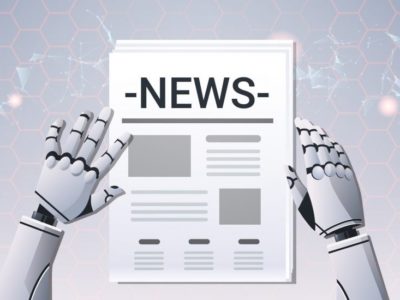By its very definition, disruption is something that the business cannot plan for, but it can set itself on a path that allows for the deft navigation of change.
RELATED: Navigating the storms of disruption
The war in Ukraine. Potential grid collapse. Global disruption across pandemic aftershocks. Climate disasters across East Africa. These events have ripple effects that run across countries and organisations and follow a clear conversation template – what do we need to do? How can we evolve to sustain the business? How do we take advantage of changed conditions? However, as Jonathan Tullett, Associate Research Director, IT Services & Cloud, at IDC sub-Saharan Africa, points out disruption gets worse before it gets better.

Jonathan Tullett
“The numbers aren’t looking great in 2023, sub-Saharan Africa is underperforming in terms of GDP recovery with a slightly negative performance, and best case it may hold flat,” he says. “Globally, the dynamic has slightly changed and it looks likely that we will avoid a potential global recession but the environment doesn’t make for a great growth prospect in terms of investment.”
Energy insecurity is a challenge, particularly when it comes to investment. There are questions around what the situation means for the protection of the local economy and it’s immensely challenging for the organisation as so many factors are outside its control. Foreign investment has increased, but not in South Africa. There is an increase in infrastructure projects across the continent with investment interest shifting focus – and this is a concern.
“The reality is that the organisation is here to do business, to service customers and make money but confidence right now isn’t very high,” says Tullett. “However, there is significant investment going into renewable energies and reducing power consumption across the business which underscores both the resilience of the South African organisation and its focus on finding new ways of doing business. Disruption, even to the extent of the current energy crisis, is not an excuse to not do business or avoid the imperatives of digital transformation.”
Tullett believes that the money is still on the table but there is more pressure around what delivers for the business and where the money is going. The good news is that IT spending growth has risen significantly above GDP despite concerns following policy and ongoing disruption to the economy. While skills shortages remain a challenge, companies are evolving strategies to deal with them and have invested in the development of these skills. However, many still turn to third-party service providers to provide the skills through professional services which is putting the expectations around creating and developing these skills directly back onto the service provider community.
“When it comes to supply chain disruptions, this is still an area of massive concern,” says Tullett. “There is ongoing fragility and companies are making their supply chains more resilient and reliable, ensuring the availability of services and technology as a business continuity priority. For the first time, when we asked 100% of CIOs in Africa said yes – the handful that said no were all in Turkey. From a sub-Saharan and South African point of view, 100% are committed to cloud, and 100% are deploying hybrid infrastructure.”
Businesses are focusing on dealing with disruption, dealing with operational issues while ensuring stability while remaining focused on digital transformation.
“While we can’t predict what the next disruption will be, we can ensure we have a more resilient operational infrastructure that allows for the business to operate within it,” says Tullett. “Workforce transformation remains important, as does the balance between innovation and daily operations. Companies can’t compromise on the latter as this is going up – the tolerance for failure, outage and downtime is lower than it was a few years ago. Now, however, there is a need to build bridges across the different systems and silos to ensure that the business can cohesively respond to events outside of its control.”
Disruption is perhaps the only constant in the current market and environment, but adjusting the business and how it engages with customers throughout this disruption is extremely important. Looking ahead, CEOs need to focus on the technology, investments and the operations that will embed resilience and sustainability to ensure stability regardless of what may lie ahead.
COVER IMAGE: Open Organization

































